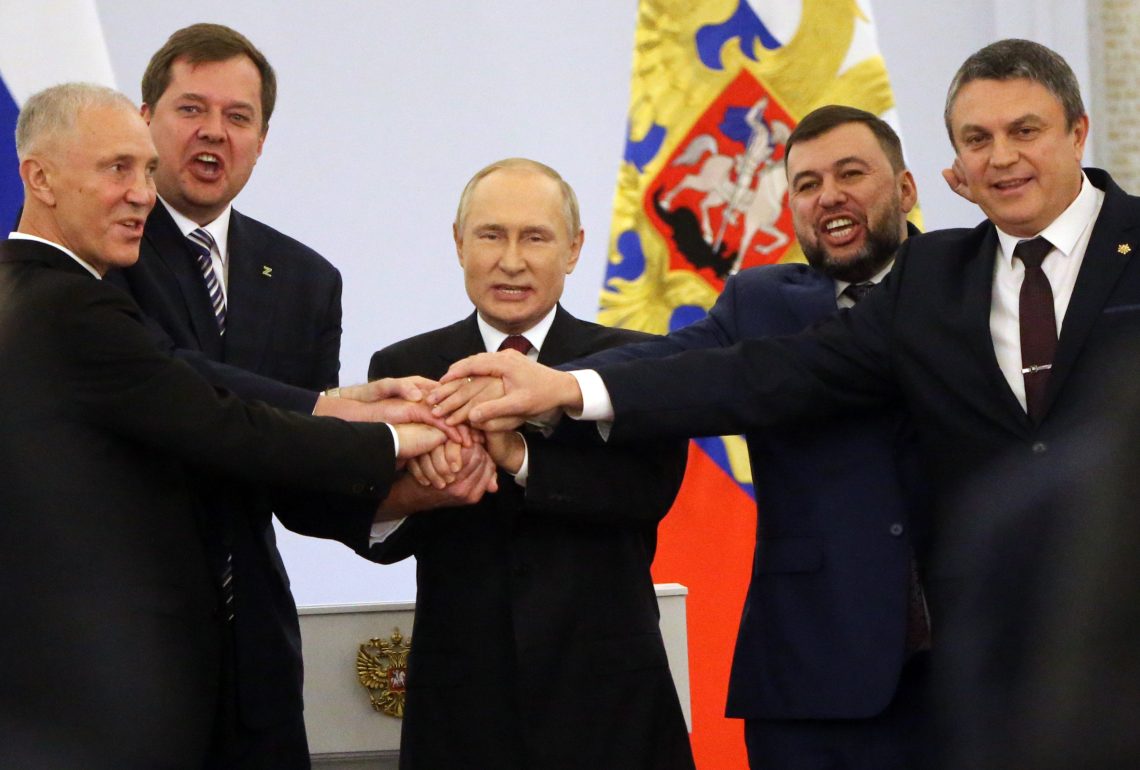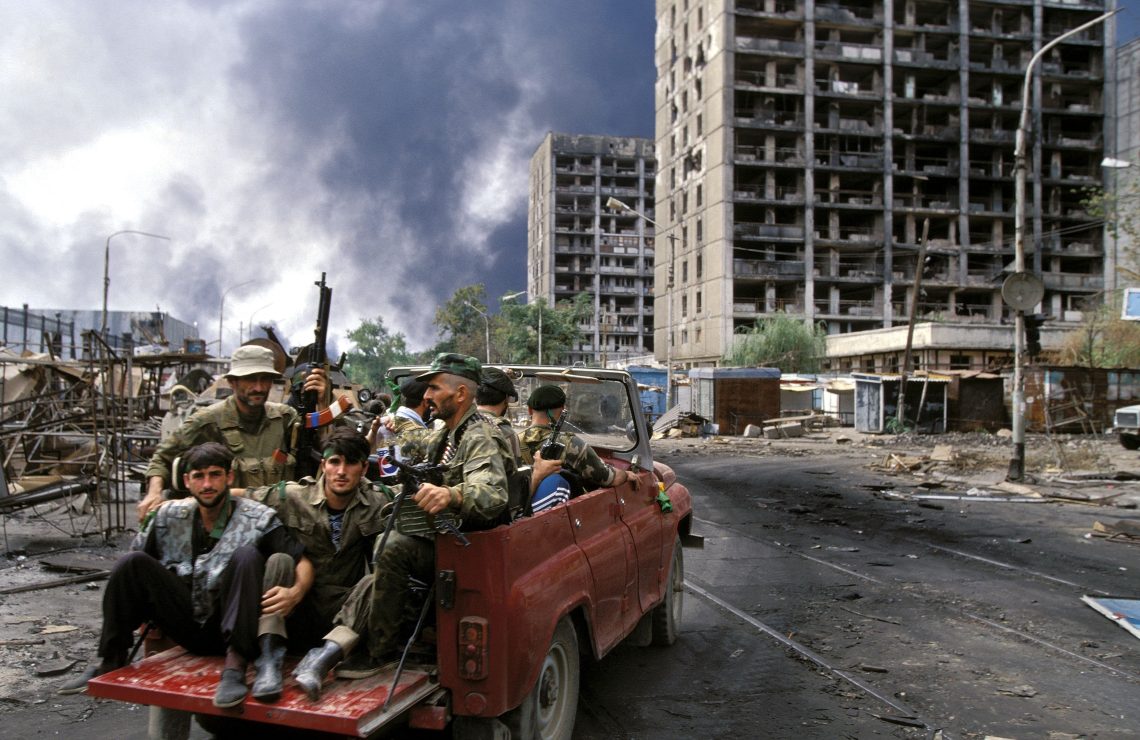Scenarios for a postwar Russia: Survival or collapse?
As the war in Ukraine continues to turn against Moscow, prospects emerge of Russian state collapse or civil conflict.

In a nutshell
- Historically, Russian defeats have preceded state collapse
- Republics of the Russian Federation could see agitation for independence
- Moscow will face stiff challenges after the war, no matter its outcome
The Kremlin’s decision to call for the “partial” mobilization of 300,000 reservists was generally viewed as a sign of desperation, and an admission that Russia had lost the war in Ukraine. Even if hundreds of thousands of troops can be rounded up and sent to the front, few believe they will make any significant difference. Absent proper training , equipment and command, the call-up may only prolong the carnage. But the likelihood of Russia achieving any of its war aims is becoming very low.
That brings into focus the question of what may happen to Russia itself once the war is over. Given the dramatic failures already incurred by the Russian armed forces, there is good reason to consider the possibility of extreme consequences, including civil war and state collapse. While some observers have begun such speculation, not many have considered these as realistic scenarios. However, given the magnitude of risks opened by Russia’s descent into chaos, the possibility must be taken seriously.
Historical memory
One reason for the plausibility of state collapse is that Russian history exhibits a strong pattern of defeat in wars leading precisely to that outcome. That was the case in 1598 when Muscovy collapsed after losing to Sweden in the Livonian War (1558-1583), and it took 15 years for the state to be reconstituted. It was very nearly the case in 1905 when a resounding Russian loss against Japan triggered bloody upheavals in St. Petersburg that badly weakened the regime of the House of Romanov.
It again happened in 1917, when a series of defeats against Germany sparked the Bolshevik Revolution and civil war; at one point, there were 20 different governments on the territory of the former Russian Empire. And most recently, it followed in 1991, when defeat in the Cold War caused the dissolution of the Soviet Union, almost breaking up the Russian Federation along with it.
Much has been made of a 2021 essay by Russian President Vladimir Putin denying the Ukrainian notion of statehood and asserting an alleged Russian right to reclaim territories within its “historical” borders. Commentary in the Western press has often been marked by condescension, suggesting that Mr. Putin was merely ranting.
That is a dangerous misconception. Such appeals to history need to be taken seriously because Russian citizens and their leaders live inside a bubble of their own historical memories. That can be difficult for Westerners to comprehend. When such historical memories serve as a filter for understanding current events, history will help shape today’s expectations, and determine real-world actions.
This is why Russian history matters so much to current Russian affairs, and why the Kremlin makes such frequent references to the past. It also means that the specter of state collapse cannot be ignored. If important actors now believe that defeat in Ukraine may bring such a collapse, they will act in ways that cause that outcome to materialize. It is symptomatic that Chechen warlord Ramzan Kadyrov refuses to implement mobilization in Chechnya, likely anticipating that his troops may soon be needed at home.

The salient features of Russia’s historical memory were formulated under Emperor Nicholas I (1825-1855). In the words of his education minister, Count Sergey Uvarov, the essence of tsardom was “autocracy, orthodoxy and nationality.” All three have remained defining features in Russia, gaining real prominence in the Putin era.
Autocracy is defined not only as one leader’s rule but also as a total lack of accountability. Russia has never had a ruler accountable to earthly power; in this sense, Vladimir Putin represents normalcy.
The role of orthodoxy was defined by the writer Fyodor Dostoevsky (1821-1881), who famously claimed that “to be Russian is to be Orthodox.” The implication is that the role of the Orthodox Church is to legitimize the Kremlin’s power and set Russians apart from the rest of the world as the only true Christians. Mr. Putin’s relationship with Patriarch Kirill is, again, completely normal.
Nationality is the tricky one. The Russian word narodnost refers not to nation in any Western sense but a deeper commonality among members of Holy Rus. It is the driving force in the focus on “patriotic education” presently being turbocharged in Russian schools. And it explains why Ukrainian women and children are being deported to the far reaches of the Russian Federation, where they may help breed a pure Slavic race to replace the non-Slavic minorities being sent to die in Ukraine.
Scenarios
Regime survival
Potential future developments for Russia may be grouped into three different scenarios, with the first featuring regime survival.
It may seem quaint when Russians portray Vladimir Putin as part of a trajectory of leaders running from Ivan the Terrible and Peter the Great to Joseph Stalin. Less amusing is that this form of leadership has been the enduring mode of Russian governance throughout the centuries – interspersed by episodes of war and collapse. If Mr. Putin proves he is up to the task, he may remain in power. If not, then he will disappear.
Irrespective of who is in charge, regime survival will have the type of Stalinism based on an extreme cult of the leader, xenophobia and the indoctrination of Russian values. Add to these an intensified repression against so-called enemies of the state, borders closed to the outside world and a descent into an autarkic war economy. The economic model would resemble the Soviet-era “structural militarization,” implying that all of society is subjected to the needs of the military. The main difference would be that Russia’s present-day military production capabilities are, in terms relative to the United States, vastly inferior to those of the former Soviet Union.
If Western governments keep their promises to assist Ukraine’s postwar reconstruction, the outlook of this scenario could be like the end of the Korean War: an armistice but no peace. While Ukraine would develop along the trajectory of South Korea, integrating into the Western community, Russia would become a giant North Korea – armed with nuclear weapons but with a decrepit economy and few friends in the outside world. (Tellingly, even the actual North Korea has denied claims it is now selling weapons to Russia.)
The weak point of this scenario rests in the long-standing glorification of the country’s armed forces. The armies of Alexander I defeated Napoleon’s Grand Armee, and those of Joseph Stalin felled the Nazis in the Great Patriotic War. The latter triumph has been hammered into generations of Russians and celebrated every year with a massive parade on Red Square.
If the Kremlin can no longer credibly maintain that the military can still protect Russia against foreign enemies – as all those resisting its forces in Ukraine are depicted – those in power will be in deep trouble. When Mr. Putin launched his “special military operation,” it was no surprise that it was held up as a struggle against Nazis. Now that those very “Nazis” have routed his glorious armed forces, the facade of his macho regime is crumbling.
State collapse
If a kind of restoration of Stalinism fails, one of two alternative scenarios is state collapse. This script would see a rerun of the chain of events that played out in 1991 when Moscow faced challenges from subjects of the federation who insisted on proclaiming independence. As then, this process would feature a mosaic of different outcomes.
In Chechnya, Mr. Kadyrov could ignite a renewed war of insurrection that would spread across the North Caucasus. Neighboring Dagestan is already unstable. Regimes in oil-rich Muslim republics along the Volga, like Tatarstan and Bashkortostan, could opt to break with Moscow and seek to build relations with Kazakhstan and Turkey. That would cause a drastic reorientation in what is today considered Russian energy flows. China could impose a protectorate in the Far East to assume control over regional oil, gas and timber resources, creating Chinese exclaves similar to the dynamic developing in Africa.
While the Russian Federation might still uphold a formal appearance of unity, it would be a Potemkin state. Behind the curtain, the government would have trouble sustaining key central functions like central bank operations, financial market oversight and fiscal federalism. The implications for education, health and social services are obvious.
Civil war
The final, more sinister civil war scenario recalls the events that played out in 1917 when troops returning from the war with Germany triggered a mass insurrection. The danger of such a present-day conflagration is exacerbated by anger from the leaders of ethnic minorities, whose men have been disproportionately drafted for the war in Ukraine and are killed in large numbers.
A civil war could even be triggered by Ukraine: if Moscow continues shelling its territory, Kyiv could conceivably take the war into Russia. Available options would range from cross-border commando raids and long-distance missiles to the insertion of combat-hardened ethnic Russian and Chechen troops fighting on the Ukrainian side.
Conclusion
It may be tempting to dismiss these scenarios as extreme, and perhaps they are. But they bring home the extreme nature of the challenges facing any middle-of-the-road path for Russia’s postwar recovery. Even if the Kremlin’s propaganda machine can spin any outcome of the war as a victory, the failure of the “special operation” will still trigger exceptionally severe problems.
Moscow will have to deal with embittered troops returning home and families of the fallen and wounded. It will have to come to terms with resentful governments among the ethnic minorities of the federation. It will have to find ways of rebuilding relations with former friends and allies, like China and Kazakhstan, who have been dismayed by the consequences of its conduct of the war. It will have to rebuild a civilian economy while sanctions remain, even while Russia faces collapsing revenues from oil and gas exports. And it will have to invent some form of accountable governance that has never existed in Russia, including building a modicum of popular trust in the legislature and law enforcement.
Russia’s most optimistic course imaginable would bring a postwar regime under a new leader, a peaceful and constructive approach to the above problems, easing sanctions and a market-based reentry into the global economy. Yet even under such rosy conditions, the damage already done is so profound that it will take a very long time for Russia to appear as a seemingly more normal country. Meanwhile, the three grim scenarios listed above will remain as possible outcomes.







